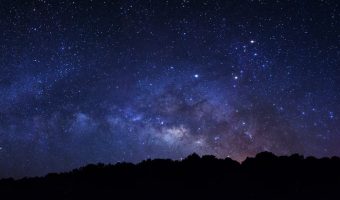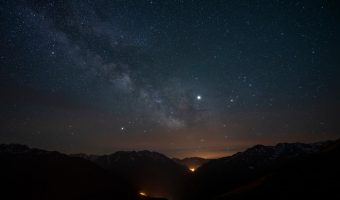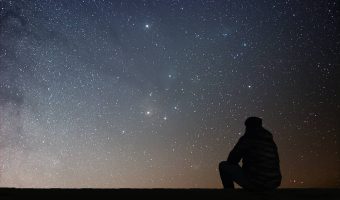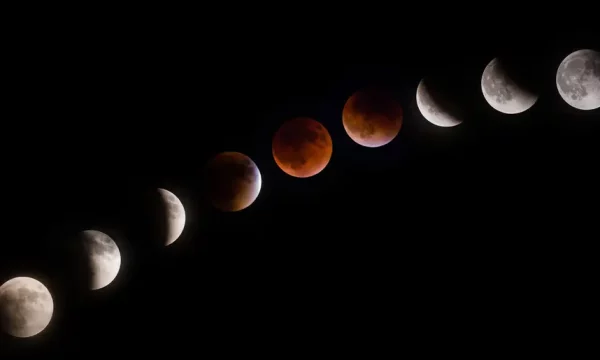
Solar vs. Lunar Eclipse: A Comparative Guide
Last Updated: November 9, 2023
In the great theater of the cosmos, few events can rival the awe-inspiring spectacle of an eclipse. These celestial dances, involving the sun, the moon, and our home planet, have captivated humanity since time immemorial, stirring a mix of fear, wonder, and scientific curiosity.
Welcome to our comprehensive comparative guide, exploring the captivating phenomena of solar and lunar eclipses.
The Moon orbits the Earth at an average of 238,855 miles (384,399 km) away in an elliptical orbit once every 27.322 days, creating phases in our night sky as its illuminated side points toward us and away from us at different angles in different parts of its orbit. The motions of the Moon orbiting the Earth as it orbits the Sun create interesting interactions, the most dramatic of which are known as eclipses.
Eclipses occur when one astronomical body appears to cover another body from the observation of a third body. In this case, we see the Moon appear to cover the Sun from our perspective here on Earth or see the effect of the Earth covering the Sun on the Moon.
Due to the Moon’s slight 5-degree tilt relative to its axis and the plane of orbit and the 23.5-degree axial tilt of the Earth, an eclipse does not occur each month as the Moon orbits the Earth. Anywhere from four to seven times a year, these three astronomical bodies line up just right to create these dramatic shadow shows. There are two types of eclipses: solar and lunar, determined by which body is being eclipsed.
Solar Eclipses
Let’s start with the one you are probably most familiar with: the solar eclipse. During a solar eclipse, the Moon appears to cover up the Sun.
While the Moon’s diameter is 400 times smaller than the Sun’s, it is also roughly 400 times closer to Earth than the Sun, meaning they both appear about the same size in our sky. This is not always the case, meaning that not every moon in the solar system eclipses the Sun like ours does.
In fact, the Moon did not always eclipse the Sun and will not always continue to do so. It started much closer to the Earth and has been slowly drifting outward at about 1.5 inches (3.8 cm) per year. In about 600 million years, it will move far enough away that it will be too small from the perspective of Earth to cover the Sun.
Solar eclipses happen at the New Moon phase when the Moon is directly between the Sun and the Earth, but doubly so. Normally, during the New Moon phase, the moon simply disappears as we “see” its nighttime side. However, when the orbits line up exactly, the moon crosses directly across the Sun, covering it and casting a shadow across the Earth, blocking or partially blocking our view of the Sun.
Solar eclipses are only visible within this shadow (only about 300 miles or 480 km wide) and therefore cover a small area of Earth, often over the ocean, making it rarer to observe one unless you schedule it ahead of time.
This shadow has two parts: the umbra where the Sun is completely blocked and the penumbra where the Sun is partially obscured. Observers in the umbra will see a total eclipse while those in the penumbra will see a partial eclipse.
The shadow may be narrow with the total eclipse only lasting a few minutes, but Earth rotates fast enough that the shadow travels a third of the way around the Earth’s surface before the Moon moves away from alignment with the Sun.

A Few Quick Safety Points
Directly looking at the Sun for any period of time is dangerous as it can cause damage to your eyes. Usually, we don’t have to worry about this as we don’t have a reason to observe the Sun for extended periods of time. During an event like an eclipse, people want to observe it for long periods of time. Eye safety is paramount when planning for an eclipse.
***Except for the few minutes of totality during a total solar eclipse, observers MUST use a safe viewing method such as certified eclipse glasses or indirect viewing methods like a pinhole projector. Otherwise, they risk eye damage from staring at the direct light from the Sun for so long. Check out more about solar eclipse viewing safety here.***
Be on the lookout for local community observing events that will often have safe viewing methods available such as eclipse glasses, telescopes with solar filters, and pinhole projector activities.
Many people worry about other effects such as increased radiation or if their pets will be safe. The Sun isn’t putting out extra radiation. The Moon is simply passing in front of it. If you are observing the eclipse, implement proper eye protection methods and make sure you protect yourself as you would with any other outdoor activity such as wearing weather-appropriate clothing and sunscreen.
Your pets won’t be looking at the Sun so they won’t have any issues. They may become nervous or confused during the event, especially if they are outside, but you don’t need to worry about protecting their eyes or leaving them inside all day. There is no concern for pregnant women or other people vulnerable to various forms of radiation during an eclipse outside of the concerns already mentioned.
Types of Solar Eclipses
There are four types of solar eclipses, depending on the angles of the different astronomical bodies.
Total Solar Eclipse
When the Moon passes directly between the Sun and the Earth, completely blocking the Sun. Observers located in the center of the Moon’s shadow across Earth’s surface, the umbra, will experience a total solar eclipse during which the sky will darken to dusk levels.
Birds and other animals will quiet as they do at night, creating a surreal and eerie experience. You can see why people of ancient cultures often interpreted total solar eclipses as bad omens.
The Sun’s corona, outer atmosphere, is visible during totality during a total solar eclipse, appearing as streaks emanating from the Sun. It is normally obscured by the brightness of the Sun’s light.
Again, only during the few minutes of totality, when the Sun is completely blocked by the Moon, can observers remove their eclipse glasses and directly observe the Sun. In the moments leading up to and after totality, eclipse glasses or other approved solar viewing methods are required.
There was a total solar eclipse on April 20th of this year with the shadow passing across Australia and the surrounding waters, with most of totality being over the ocean.
The next total solar eclipse in the U.S. will be on April 8, 2024. The last American total solar eclipse in 2017 spread eclipse fever across the nation, causing eclipse glasses shortages and more. Plan ahead to avoid issues. If you don’t live within the path of totality and are planning to travel, consider booking accommodations soon as they are already beginning to book up.
Annular Solar Eclipse
During an annular solar eclipse, the Moon passes between the Sun and Earth exactly, but it is at or near its farthest point from Earth, meaning it appears smaller than the Sun and does not completely cover it. In this type of eclipse, the Moon appears as a dark disk on top of a larger, brighter disk, creating a ring around the Moon.
This is still a fantastic, surreal, and awe-inspiring event and one worth traveling to see if possible. Since totality does not occur, solar eclipse glasses must stay on for the entirety of the eclipse.
The next annular eclipse in the U.S. will be on October 14, 2023. The penumbra will cover most of North and South America with the umbra (darkest inner shadow) traveling in a narrow band from South of Portland, Oregon down through Northern Nevada, Southern Utah, the middle of New Mexico, along the Southern border of Texas, and then through Central America, Columbia, and Brazil.
Partial Solar Eclipse
During a partial solar eclipse, the Moon passes between the Sun and Earth, but they are not perfectly lined up. Only a part of the Sun will appear covered, giving it a crescent shape. During a total or annular solar eclipse, observers outside of the area covered by the Moon’s inner shadow (umbra) but within its outer shadow (penumbra) will see a partial solar eclipse.
Again, safe solar observing methods such as eclipse glasses will need to stay on for the entire eclipse while you are observing.
Hybrid Solar Eclipse
Due to Earth being a circular body with a curved surface, an eclipse can sometimes shift between annular and total as the Moon’s shadow moves across the globe, creating what is known as a hybrid eclipse.
Fun fact: Eclipses come in pairs. Lunar eclipses occur about two weeks after or before a solar eclipse, when the moon is on the other side of the Earth.
Lunar Eclipses
In contrast, a lunar eclipse occurs when the Earth is perfectly between the sun and the moon at full moon phase and the Earth’s shadow falls across the face of the Moon. Similar to a solar eclipse, there are different levels of a lunar eclipse depending on the angles at which everything lines up and how much of the moon enters the different levels of shadow.
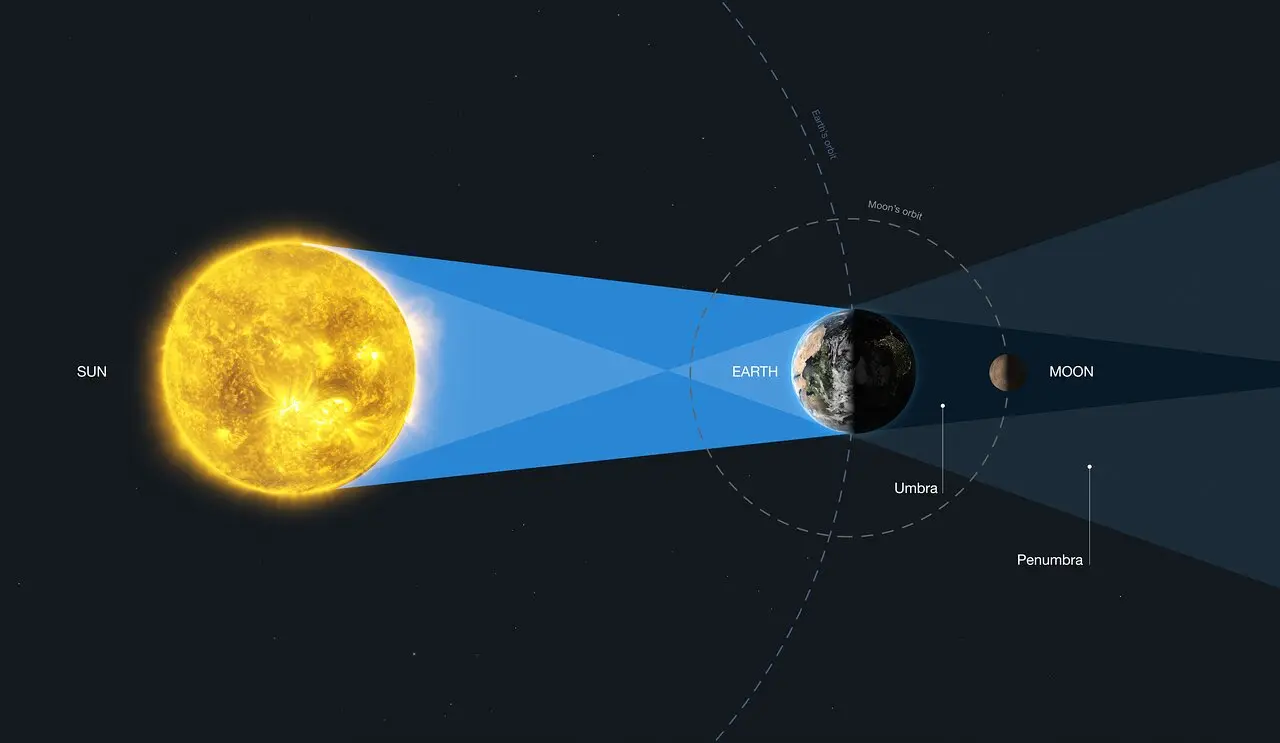
There are three types of lunar eclipses, depending on how far the moon moves into the Earth’s shadow.
Penumbral lunar eclipse
When the Moon moves through the penumbra, the faint, outer part of Earth’s shadow. It is not dramatic and is often mistaken for a regular Full Moon simply with some cloud cover.
Partial lunar eclipse
When the Earth moves between the Sun and the Full Moon, but are not perfectly aligned. Only part of the Moon’s visible surface moves into the umbra, the dark part of the Earth’s shadow. The Moon takes on a slight red-orange hue, but not across the entire lunar surface, only where it falls into the umbra.
Total lunar eclipse (a.k.a. a Blood Moon)
When a full Moon is completely blocked from the Sun’s rays by Earth’s shadow. Earth’s atmosphere bends sunlight and indirectly illuminates the Moon’s surface, giving it a red-orange hue. A lunar eclipse can also be yellow, orange, or brown in color based on different types of dust particles or clouds in Earth’s atmosphere that allow different wavelengths of light to reach the surface of the Moon.
During a total lunar eclipse, there are seven stages which include the previous two types of eclipses:
- Penumbral eclipse begins – Earth’s shadow starts moving over the Moon with parts of it appearing in shadow, not hued or tinted orange.
- Partial eclipse begins – Earth’s umbra starts covering the Moon, making the eclipse more visible as the orange-red hue traces its way across the moon as the minutes tick by.
- Total eclipse begins – Earth’s umbra completely covers the Moon and the whole Moon becomes red, brown, or yellow in color.
- Maximum eclipse – the period of total, absolute coverage of the moon in the Earth’s umbra.
- Total eclipse ends – Earth’s umbra starts moving away from the Moon’s surface, revealing more and more of the normal hue of the Moon as it goes.
- Partial eclipse ends – Earth’s umbra completely leaves the Moon’s surface, with no more hues.
- Penumbral eclipse ends – Eclipse ends and Earth’s shadow completely moves away from the Moon.
Check out our Lunar Eclipse Calendar to plan ahead.
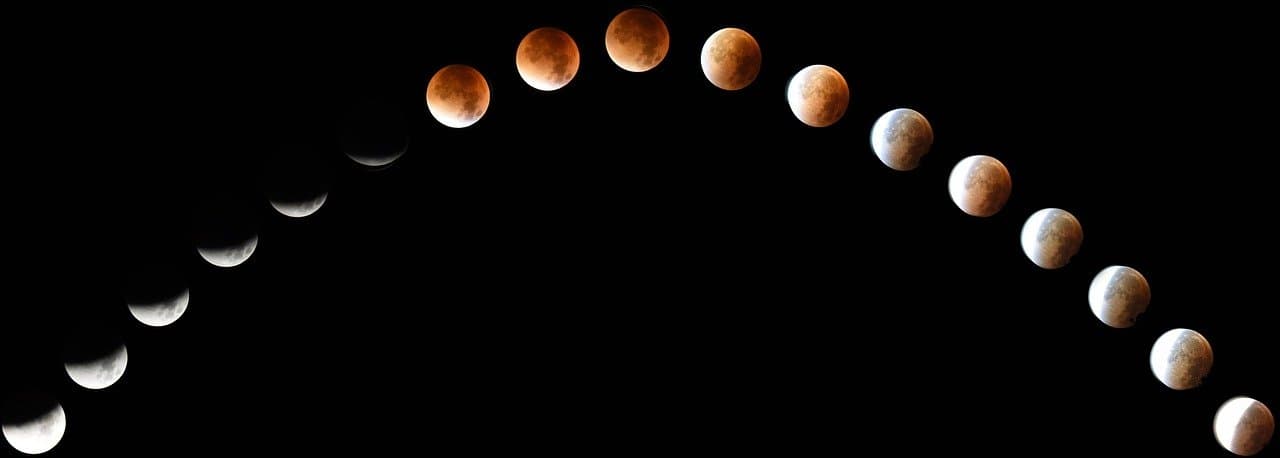
How to View a Lunar Eclipse
There is no need for solar eclipse glasses as you are not looking at the sun, but the moon, which reflects a portion of the sun’s light. It is completely safe to view the lunar eclipse as you would a full moon.
Lunar eclipses are much more egalitarian than solar eclipses as essentially the half of the Earth that is facing the moon at that moment (the night side of the Earth) will be able to view the eclipse.
Simply find a good location for stargazing. Even in the city, you will likely have a decent viewing of it as long as the sky is clear (no clouds) and you can see the moon (nothing blocking the part of the sky where it is such as buildings or trees).
Your eyes will be more than sufficient. Telescopes are often not recommended for viewing the moon as they are a bit overkill for something so close. If you do have a small telescope or binoculars, lunar observing is best done at the edge of the moon so that your viewing device and your eyes are not overwhelmed by the amount of light being reflected off the full moon’s surface.
International Observe the Moon Night is on October 21st this year providing a wonderful opportunity to learn about the moon right before the Partial Lunar Eclipse.
In summary, check out the table below:
Type of Eclipse | Orientation | Visibility | Eye Safety Required? |
Total Solar Eclipse | Sun–Moon–Earth Perfect line-up | Moon will slowly pass in front of the Sun as a dark disk, covering more and more.
At totality, viewers in the umbra will see the Sun covered by the Moon and the corona around it.
Totality in the umbra’s path, partial solar eclipse in the penumbra’s path. | Yes, except for the few minutes of totality |
Annular Solar Eclipse | Sun–Moon–Earth perfect line-up but the Moon is at or near its farthest point away from Earth and therefore too small to fully cover the Sun | Moon will slowly pass in front of the Sun as a dark disk, covering more and more.
“Totality” will appear as a dark disk covering a slightly larger bright disk, partial solar eclipse (again with a smaller disk) in the penumbra’s path. | Yes, throughout the event |
Partial Solar Eclipse | Sun–Moon–Earth but not perfectly lined up due to being outside the umbra path, but in the penumbra | Moon will slowly pass in front of the Sun as a dark disk, covering more and more.
Only a part of the Sun will appear covered during totality as it is not in the umbra’s path, giving it a crescent shape. | Yes, throughout the event |
Total lunar eclipse | Sun–Earth–Moon perfectly lined up | Creates seven stages of penumbral, partial, and maximum eclipse. At maximum, the moon will be completely in Earth’s shadow and often tinged red (or other colors depending on the particles in the atmosphere). | No |
Partial lunar eclipses | Sun–Earth–Moon imperfectly lined up, passing through only part of the Earth’s umbra | Parts of the moon lie in shadow, often with a red-orange hue | No |
Penumbral lunar eclipse | Sun–Earth–Moon lined up, but the Moon is only in the penumbra, the faint outer shadow | Moon appears lighter, could completely miss it | No |
Conclusion
Eclipses occur when three astronomical bodies line up perfectly in such a way that one covers the other from the third’s perspective. Earth and the Moon currently qualify so that we have solar and lunar eclipses, the former where the Moon covers up the Sun from the Earth’s perspective and the latter where the Earth covers up the Sun from the Moon’s perspective, casting a shadow across the Moon’s surface.
Both are surreal events and contain variations of totality. Solar eclipses require eye safety measures while lunar eclipses do not.
Planning ahead is vital for both, but especially for total solar eclipses as the path of totality is relatively small and often occurs over the ocean.
We hope that this Eclipse Guide has helped you better understand these events and prepare for the upcoming eclipses coming to your area of the globe.
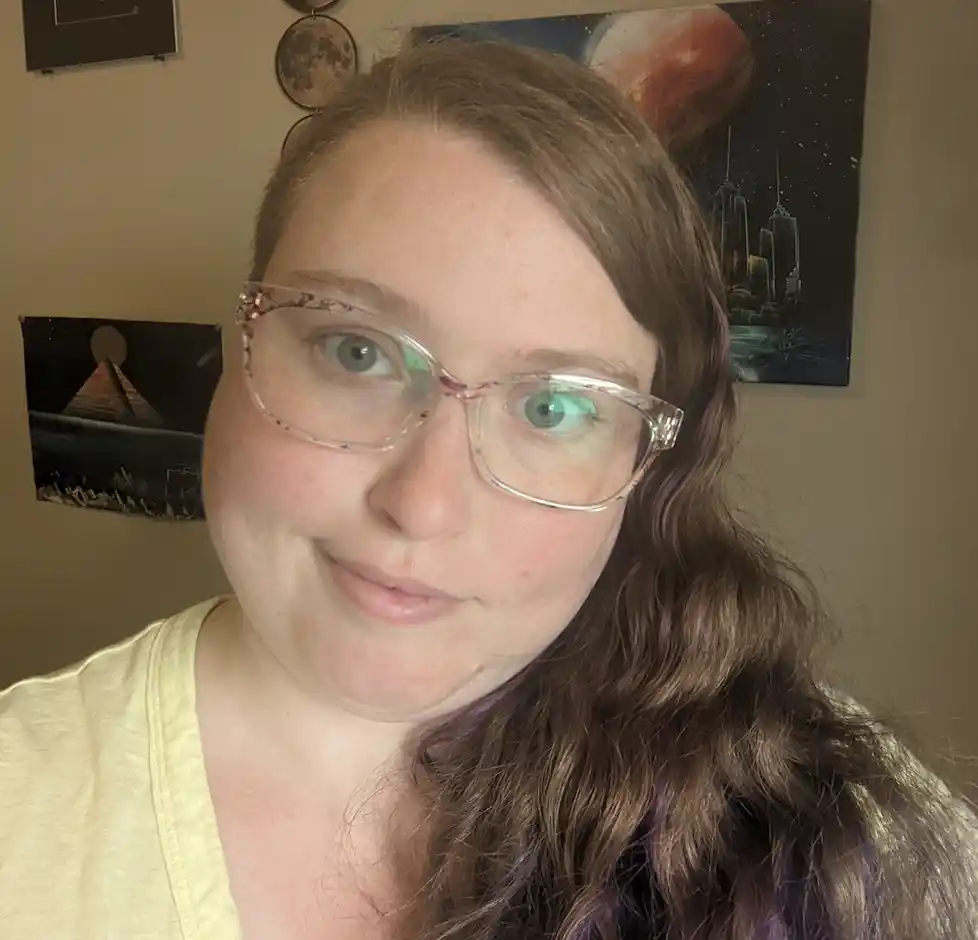
Sarah Hoffschwelle is a freelance writer who covers a combination of topics including astronomy, general science and STEM, self-development, art, and societal commentary. In the past, Sarah worked in educational nonprofits providing free-choice learning experiences for audiences ages 2-99. As a lifelong space nerd, she loves sharing the universe with others through her words. She currently writes on Medium at https://medium.com/@sarah-marie and authors self-help and children’s books.
Wow! There's more to read 🚀
This page is part of our collection of articles about the moon and stargazing. If you enjoyed the read, then you’ll love the following articles.

